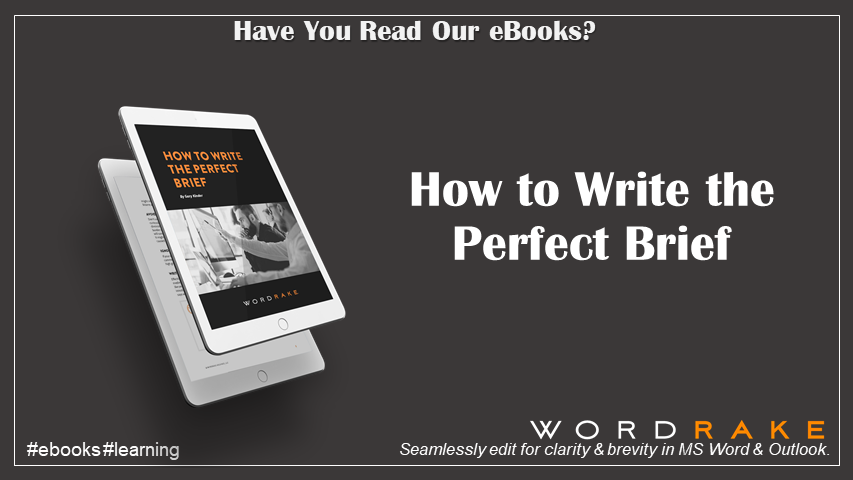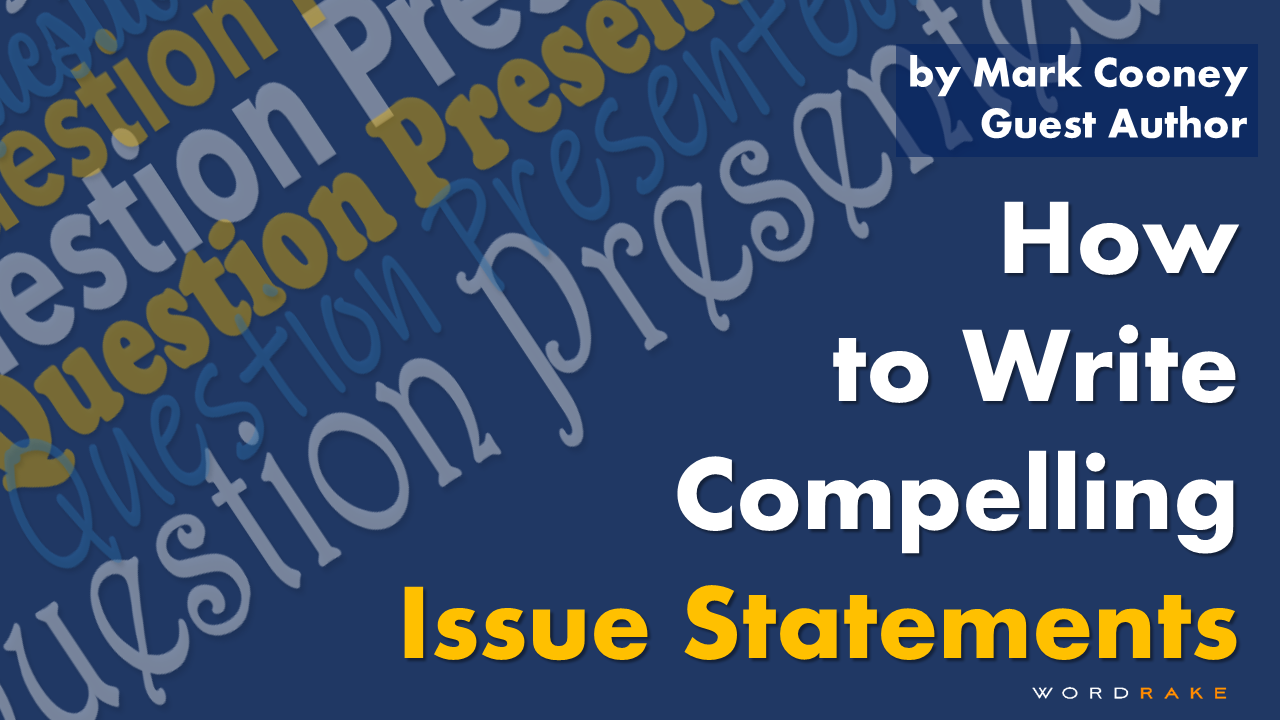Legal writing often feels formulaic. It follows established patterns and uses predictable structures. But those formulas exist for good reason. Predictable structures help legal readers—judges, lawyers, clerks, and other professionals—quickly understand the argument, locate key facts, and process information. Legal readers rely on them for cognitive shortcuts to handle their caseloads.
Since legal readers must process a lot of information in a short time, legal writers should use familiarity to help readers grasp information and make good decisions efficiently. But following convention doesn’t mean your writing has to be dull, lifeless, and indistinguishable from everyone else’s.
The best legal writing is both conventional in structure and distinctive in voice. A strong writer can bring clarity, force, and even elegance to legal documents without challenging norms. Instead, the clever legal writer uses conventions to their advantage. When conformity provides a subtle advantage, it’s called genre bias.
What Is Genre Bias?
When a reader picks up a document, they come with expectations for its style and form, shaped by the genre in which it is written. Expectations include organization, content, vocabulary, and style. These expectations about how a document will unfold—and the predisposition to agree with writing that meets these expectations—are called genre bias.
While bias is often considered negative, genre bias may help you. As Bret Rappaport discusses in A Lawyer's Hidden Persuader: Genre Bias and How It Shapes Legal Texts, genre bias shapes interpretation and encourages readers to agree with your argument. Following convention may even earn the reader’s patience so you have time to make a complex point or to start your introduction with a humanizing story about an otherwise unsympathetic corporate client. Readers are more likely to trust arguments delivered in the form they expect, and they see writers who follow conventions as more competent and professional.
But when a document defies genre conventions, readers must expend extra effort to understand how the information is organized, which distracts from the content and increases the likelihood of misinterpretation. You may also face unwarranted resistance to your arguments. The negative perception may even extend beyond your document to you. Legal readers often interpret deviations from conventional formats as signs of inexperience, carelessness, incompetence, or disrespect.
Benefits of Genre Bias
Genre expectations reduce cognitive load and help readers make sense of material quickly. Knowing the genre, readers can place the pieces of your writing within the IRAC (Issue, Rule, Analysis, Conclusion) or CREAC (Conclusion, Rule, Explanation, Application, Conclusion) framework as they read, thus constructing a mental map of your argument. With this mental map, readers can tackle more complex arguments without getting lost. The map also helps readers overcome less-than-ideal reading conditions, such as reading a long document across multiple sittings or getting disoriented by screen-scrolling.
How to Leverage Genre Bias Effectively
When you’re writing to persuade a legal reader, do everything in your power to make it easy for them to consume your work, then agree with it. Use genre bias to your advantage.
1. Meet Reader Expectations for Evidence and Support
Legal readers expect thorough, well-supported arguments. Cite authoritative sources, connect evidence to the record, and provide sufficient context for your assertions. A document that makes it easy to see and verify support will be taken well.
2. Acknowledge Complexity and Counterarguments
Legal writing requires presenting credible arguments that recognize complexity. Acknowledging counterarguments or adverse authorities shows integrity. If you present your case as a slam dunk, readers won’t trust you, since most legal matters involve nuanced issues or competing perspectives.
3. Prioritize Brevity and Function
Legal writing demands clear language where every word matters. Every sentence should contribute meaningfully to the argument—don’t keep a pointless sentence just because it’s beautifully written. Concise writing reduces cognitive strain and keeps the reader focused on the argument.
Standing Out Without Breaking Convention
For many new legal writers, the rigidity of genre conventions can feel stifling. The rules seem arbitrary or overly restrictive, particularly to those who are accustomed to more free-form writing styles. But creativity in legal writing doesn’t come from ignoring conventions, it comes from solving problems. Over time, what initially feels restrictive can become a source of confidence and efficiency. Then you’re free to develop your voice as a writer.
Structure provides clarity, but it doesn’t dictate tone or style. Within the boundaries of conventional legal structure, there is ample room for individuality. Clear, forceful language, carefully constructed arguments, and engaging narratives can elevate your writing without defying genre norms. The key is to respect the reader’s expectations while finding ways to bring your own strengths to the work.
1. Write With Clarity and Precision
Clear, concise writing is always persuasive. Avoid legalese and jargon. Use direct, vivid language that leaves no doubt about your meaning. Strong verbs, active voice, and simple sentence construction make your points more forceful and accessible. Readers should never have to decode your writing.
2. Craft Thoughtful Arguments and Analogies
Analogies, comparisons, and striking examples can make abstract legal principles easier to understand and more engaging. They should feel intuitive, helping the reader bridge the gap between the law and the facts of your case.
3. Write a Fact Section Like a Story
The fact section is one of the most overlooked opportunities in legal writing. Instead of listing facts mechanically, treat this section as a work of narrative non-fiction. Use a clear, chronological structure as you bring the key players and events to life.
4. Develop a Confident, Personal Voice
While legal writing should remain professional, it doesn’t have to be sterile. Your tone can be authoritative without being pompous, and conversational without being too casual. Aim for a confident, assured voice that communicates skill with the subject matter. Avoid hedging phrases like “it seems” and “arguably,” which weaken your position.
5. Focus on the Navigability
Good legal writing is user-friendly. Think about how your document will be read: perhaps quickly, on a screen, during a busy day. Use clear headings and subheadings, logical transitions, and paragraph breaks to make the document as navigable as possible.
Conclusion
Legal documents may look the same, but they don’t have to sound alike. By respecting conventions and bringing your voice to the page, you can create writing that stands out in clarity, and impact. Great legal writing doesn’t come from breaking the rules—it comes from mastering them. Use the familiar structures as your foundation and build something remarkable on top. Meeting reader expectations requires clear writing and structure, and careful editing. Work on your structure, then use software like WordRake to edit for brevity, clarity, tone, and punch.
About the Author
Ivy B. Grey is the Chief Strategy & Growth Officer for WordRake. Before joining the team, she practiced bankruptcy law for ten years. In 2020, Ivy was recognized as an Influential Woman in Legal Tech by ILTA. She has also been recognized as a Fastcase 50 Honoree and included in the Women of Legal Tech list by the ABA Legal Technology Resource Center. Follow Ivy on Twitter @IvyBGrey or connect with her on LinkedIn.









